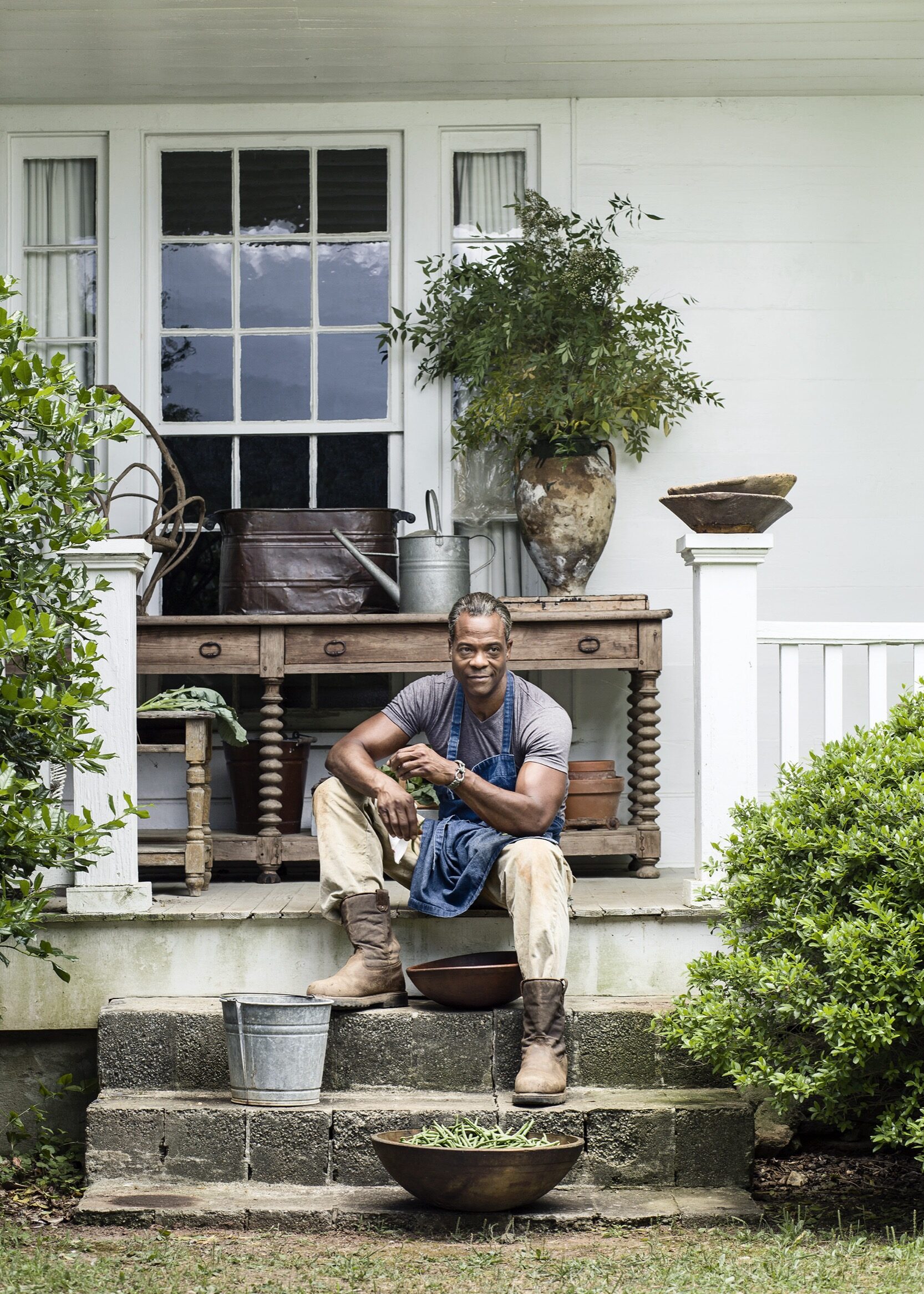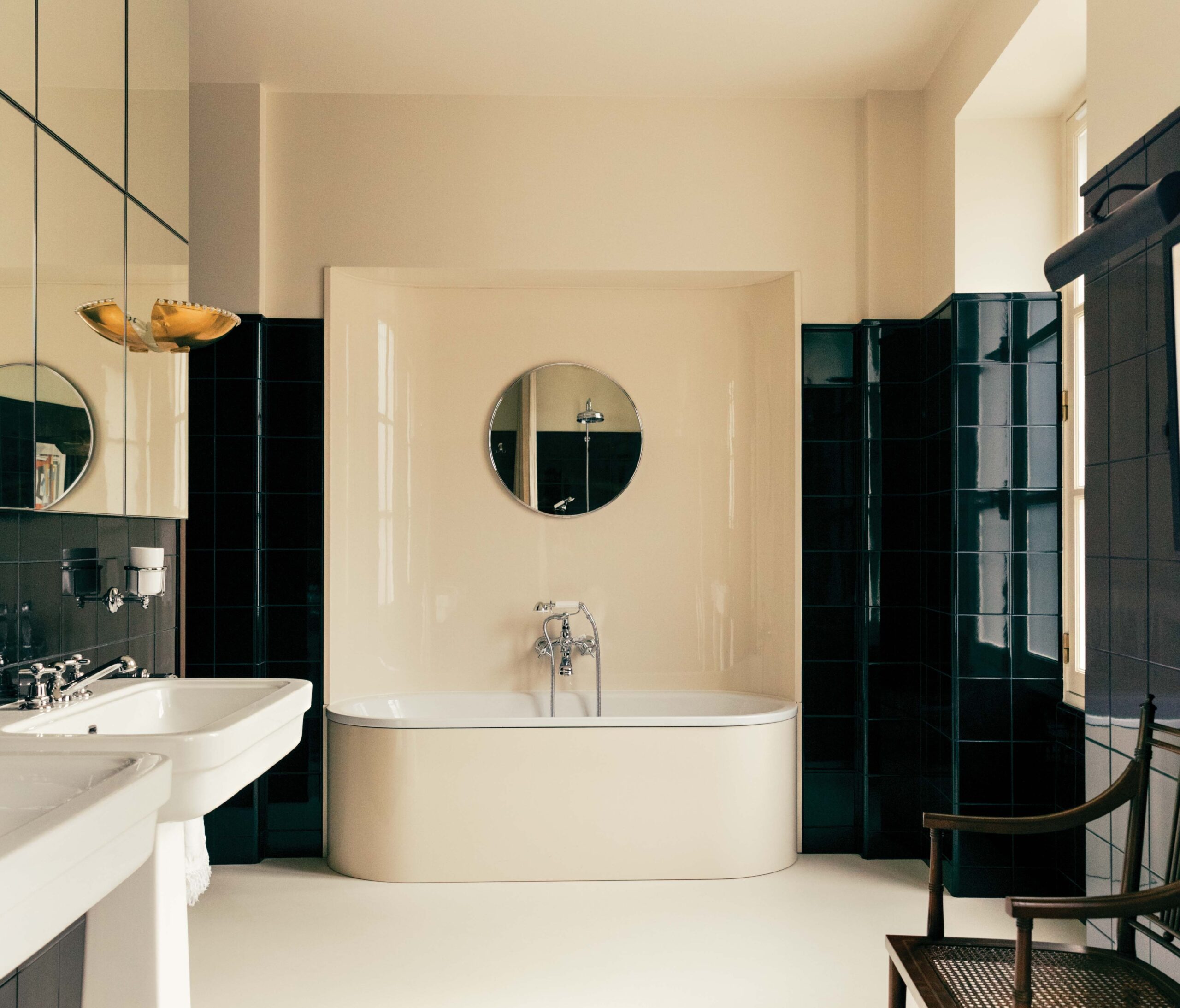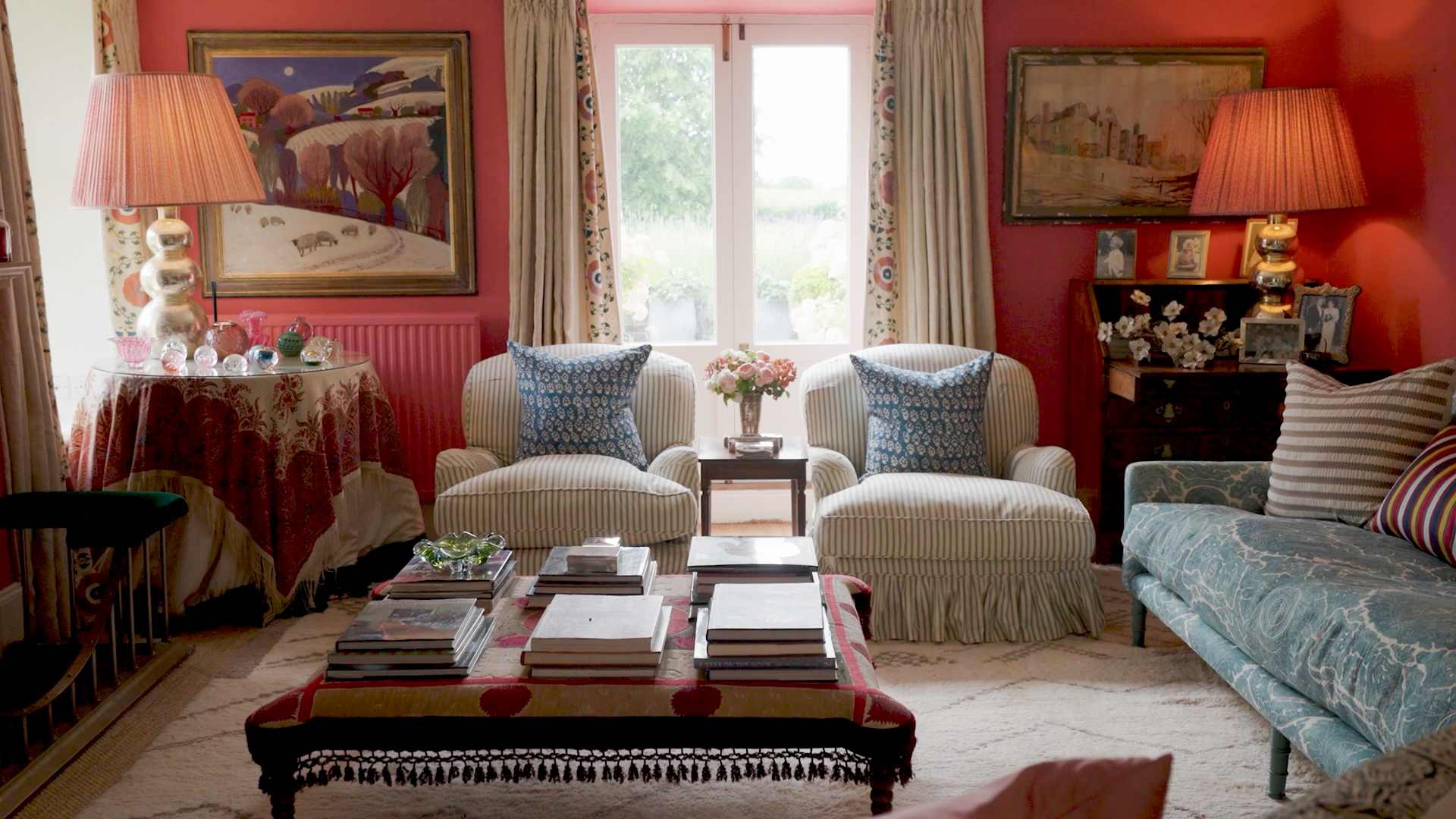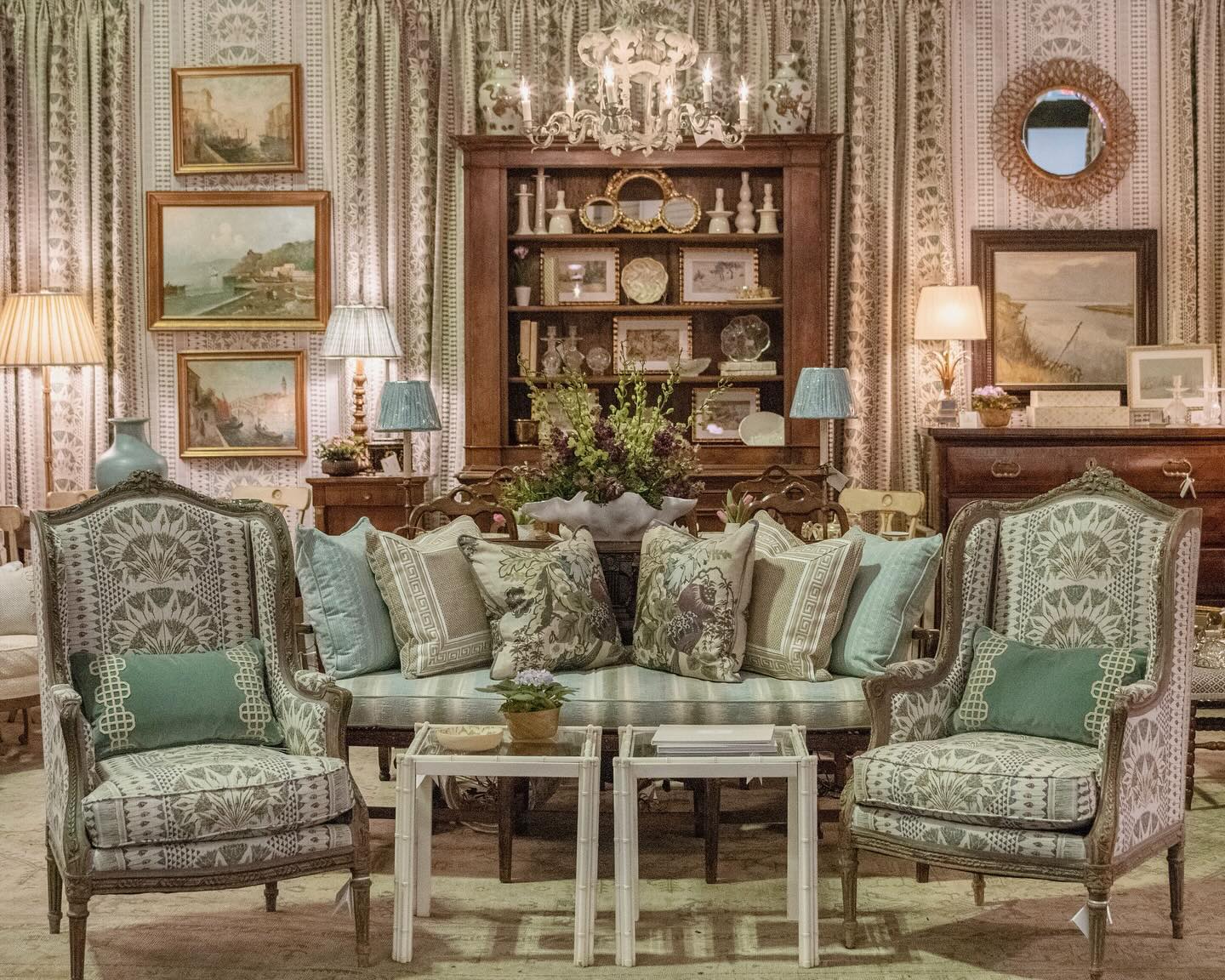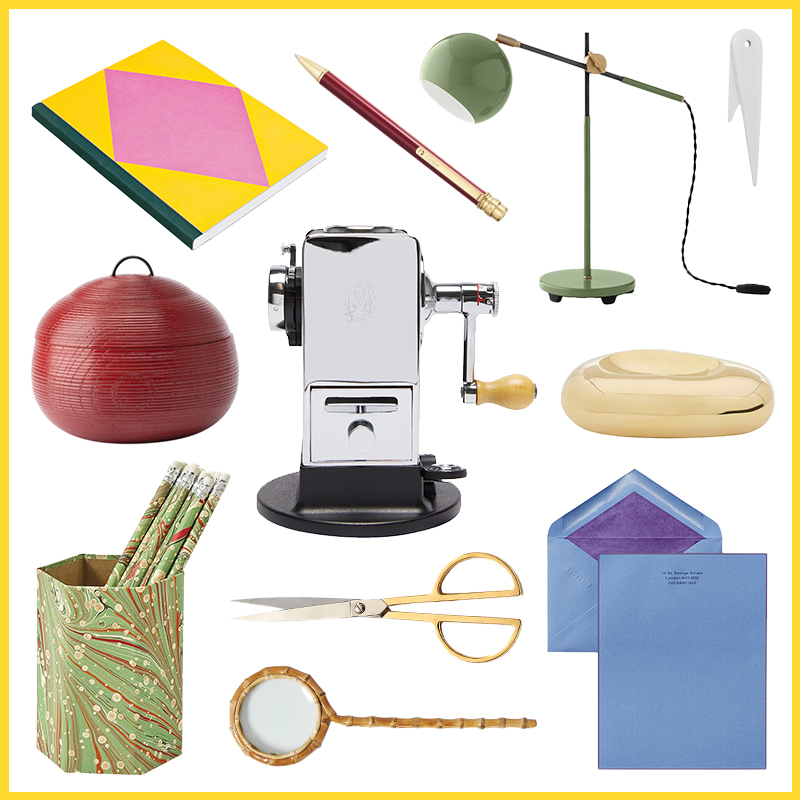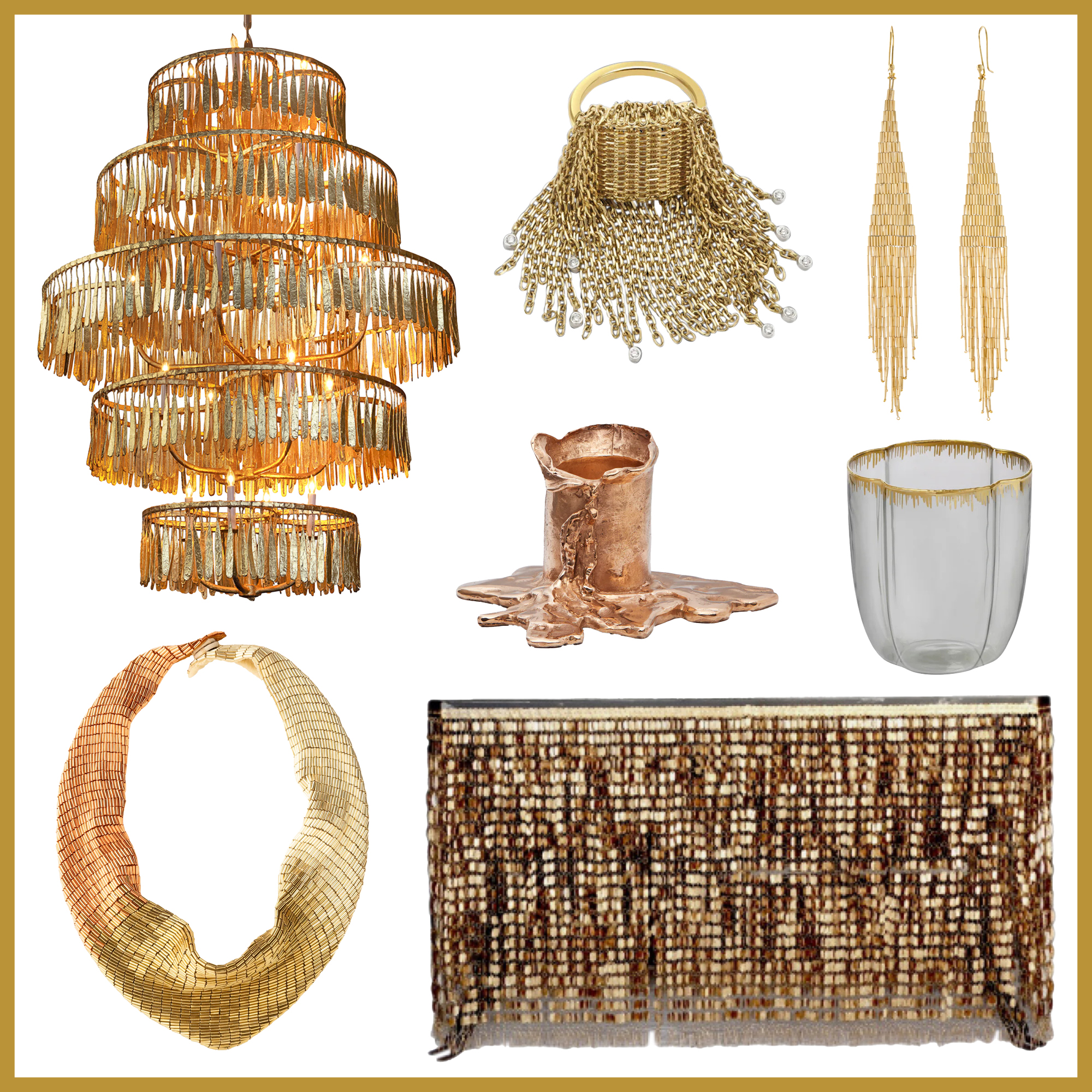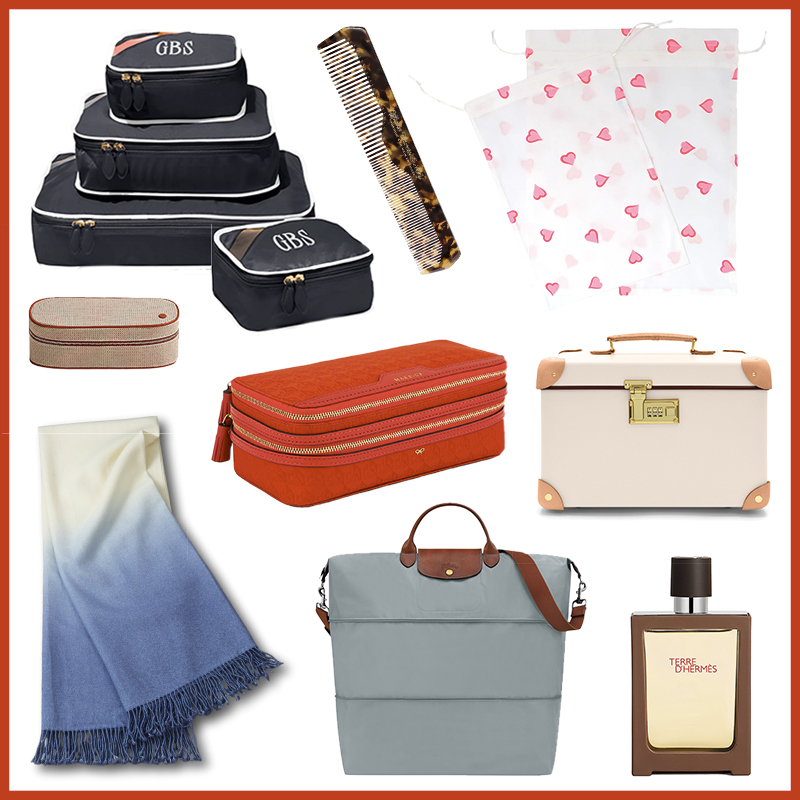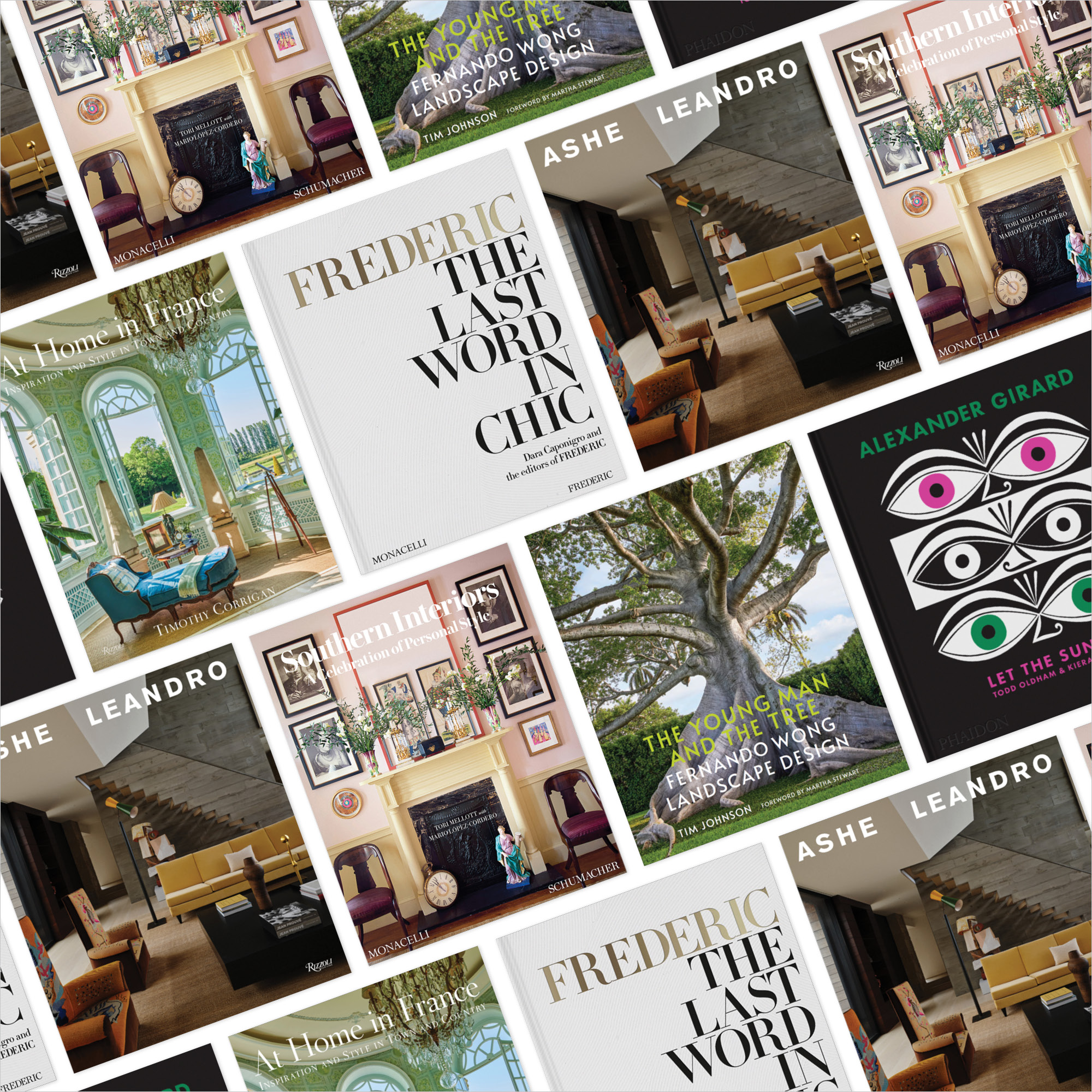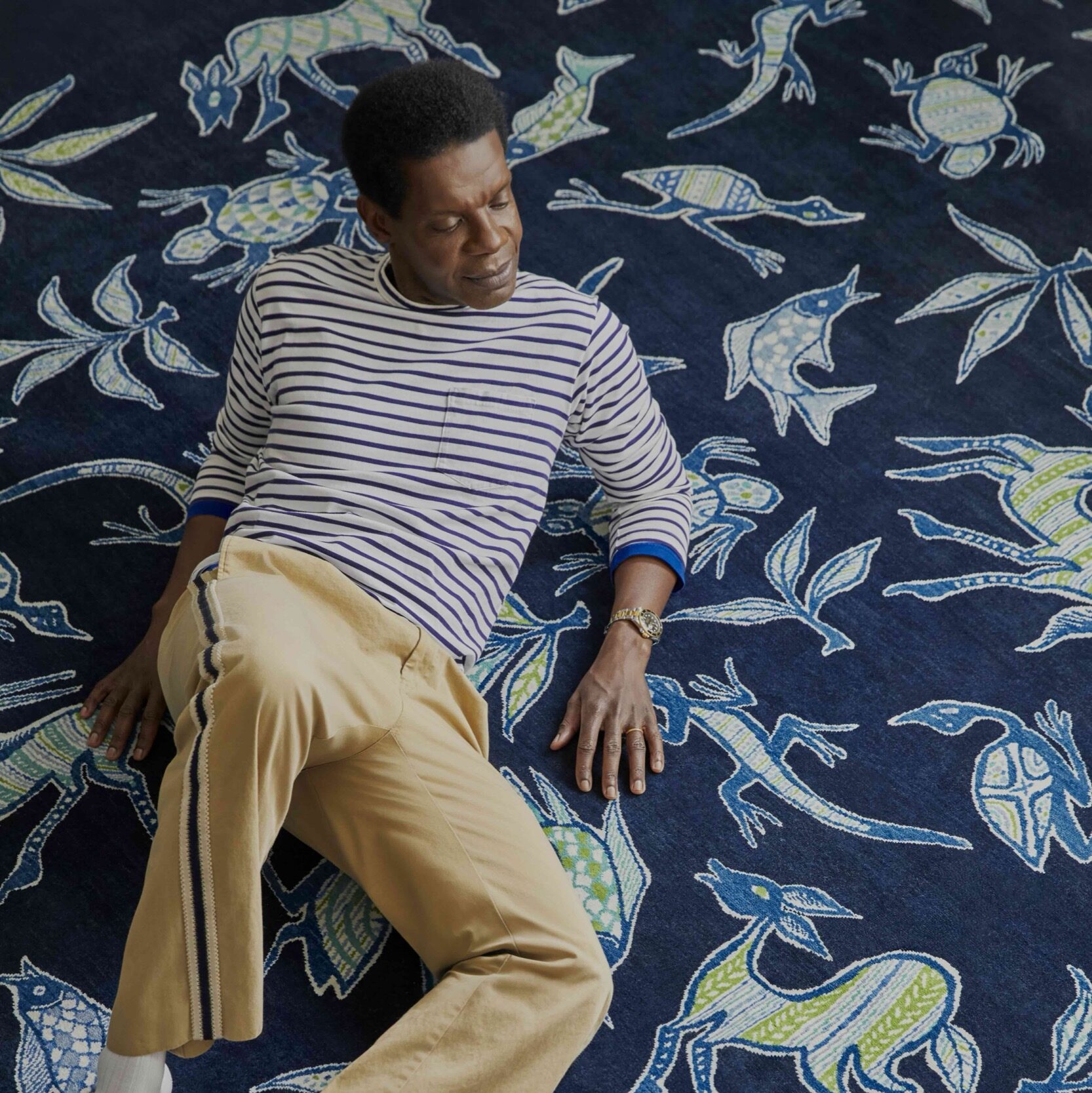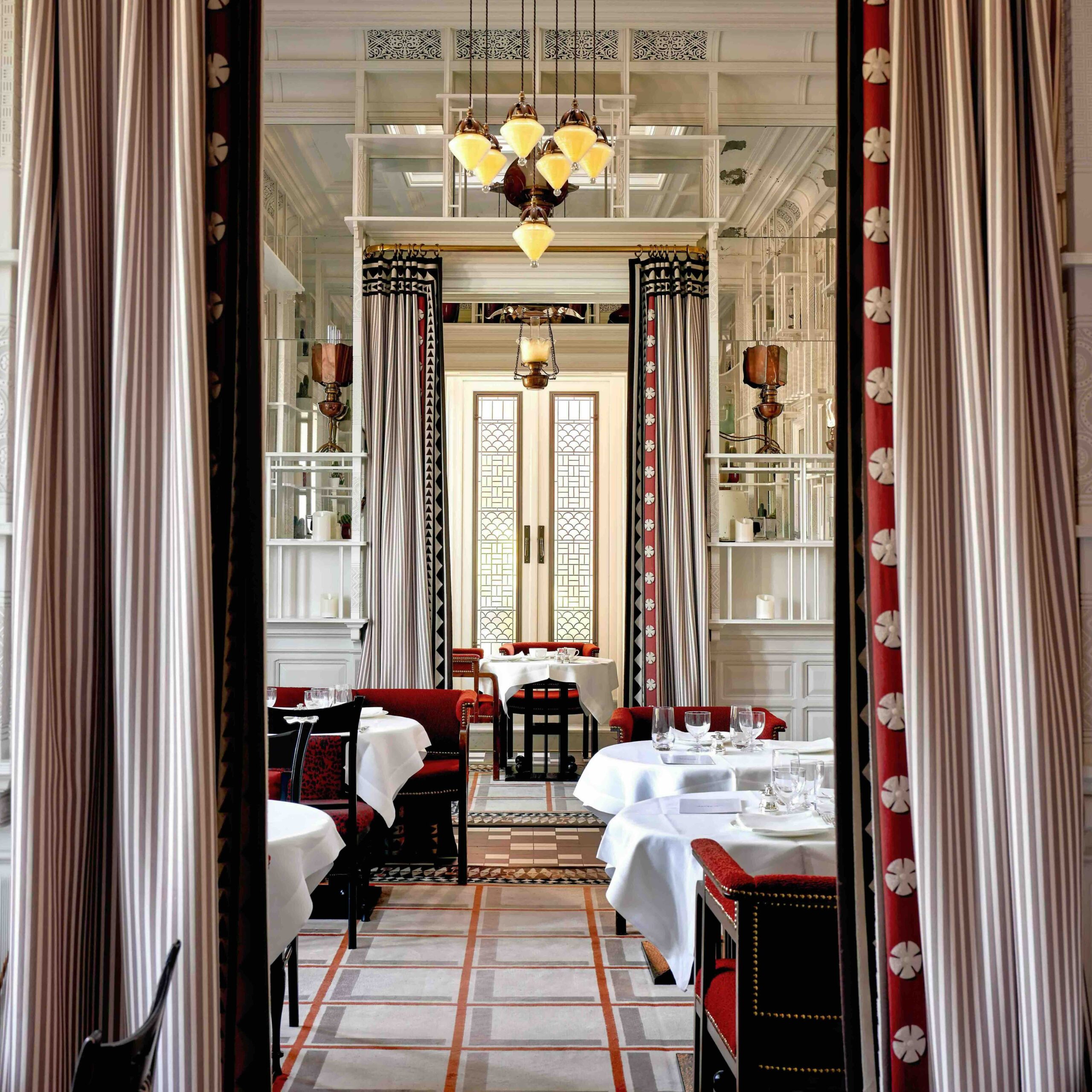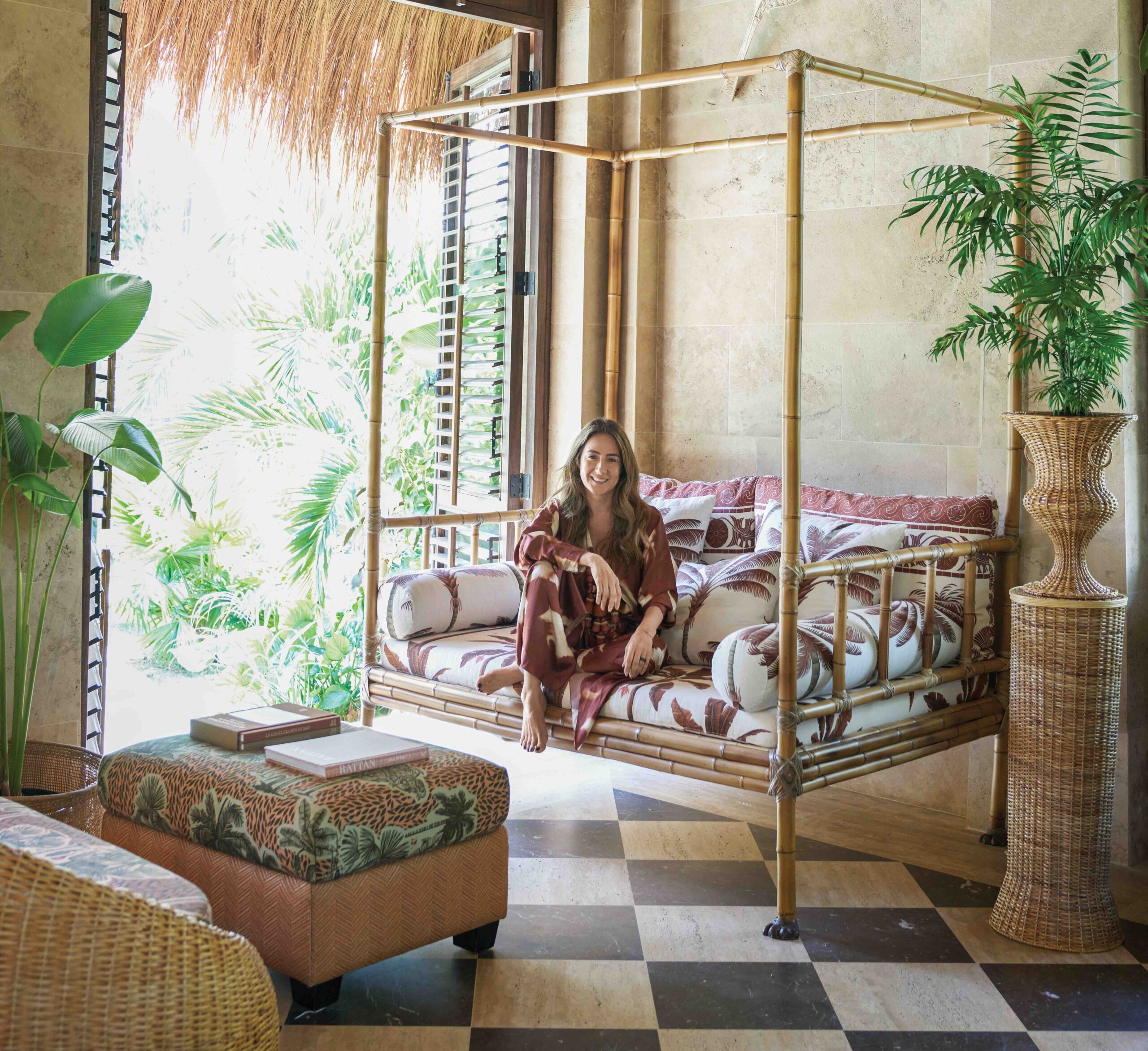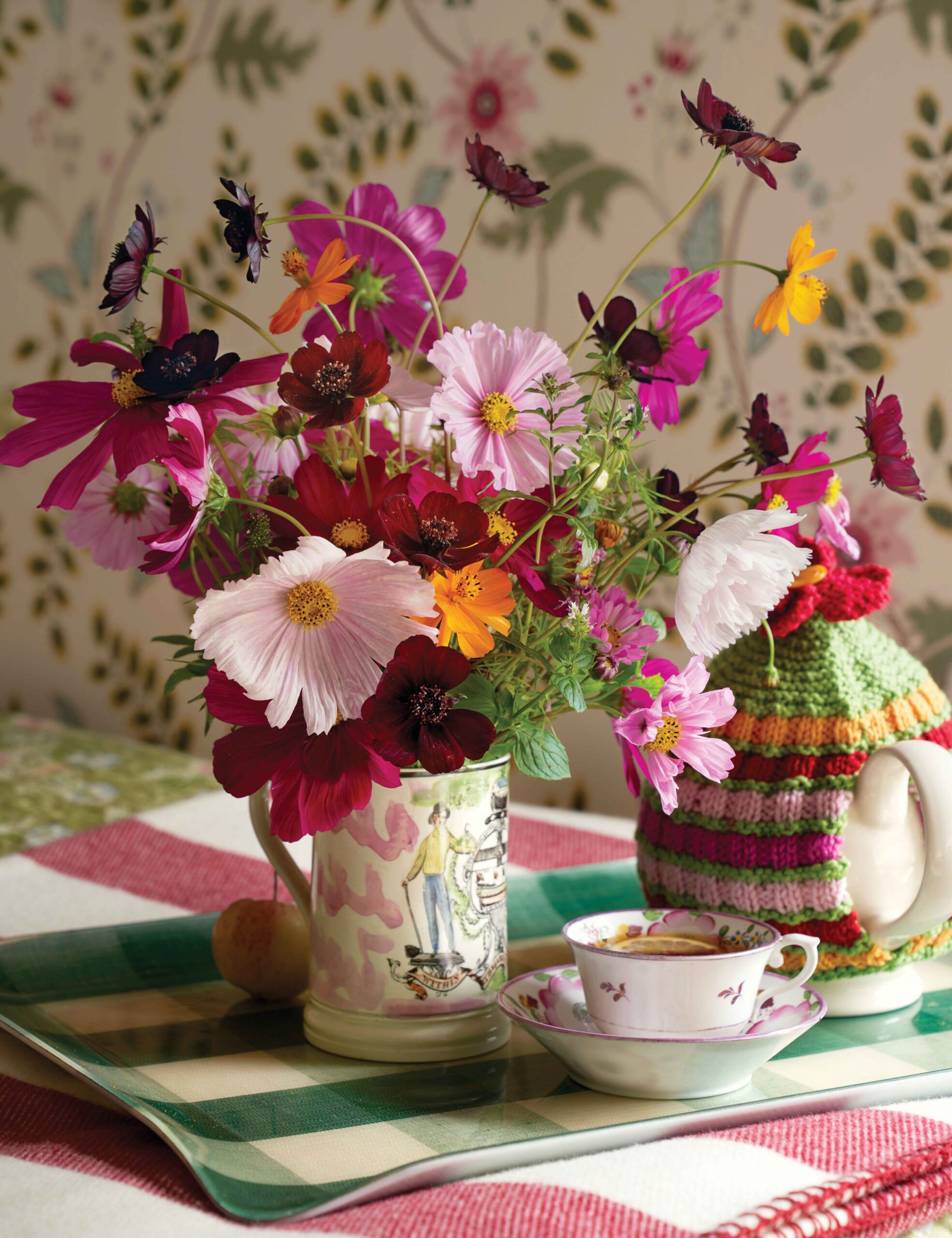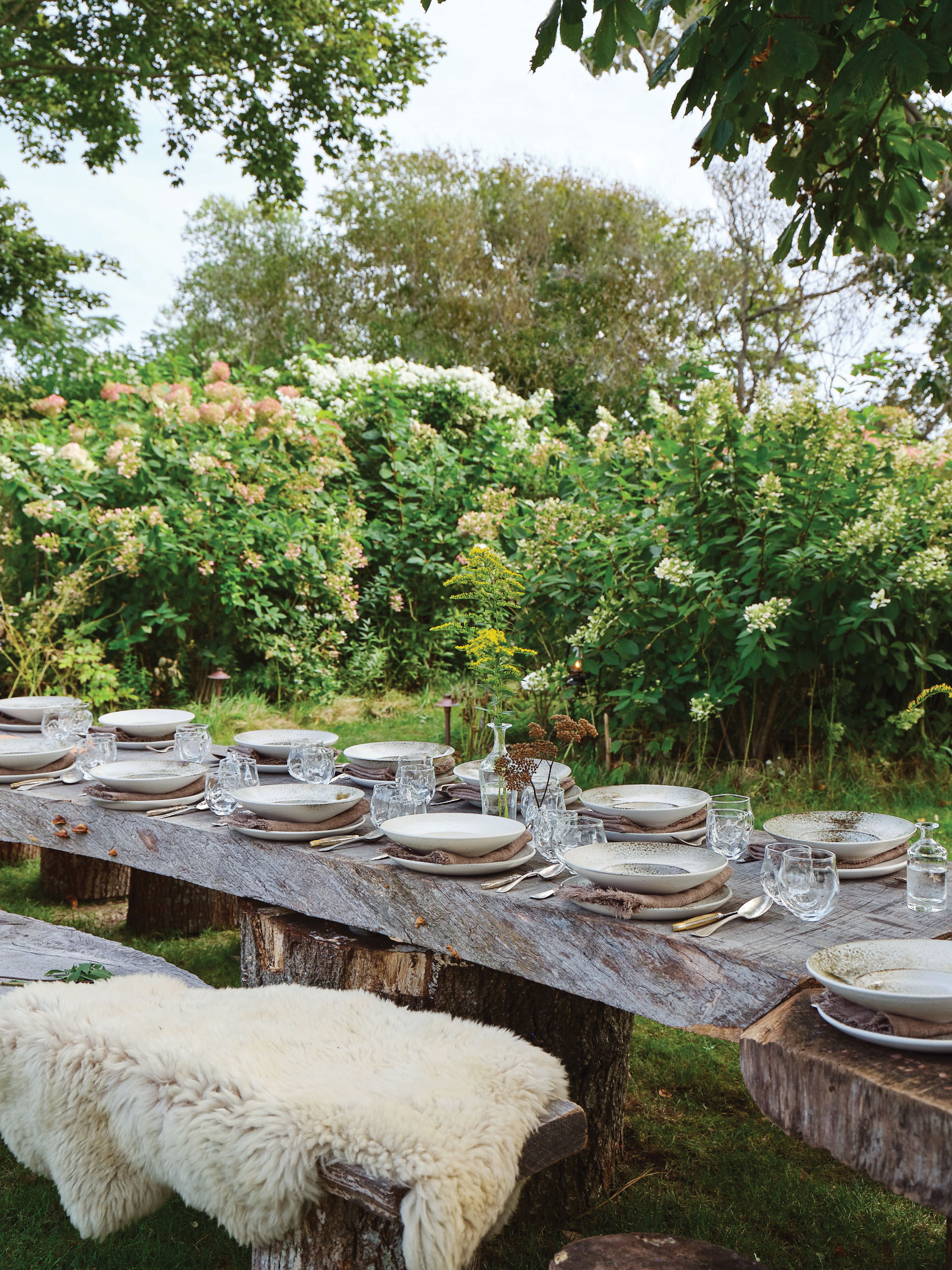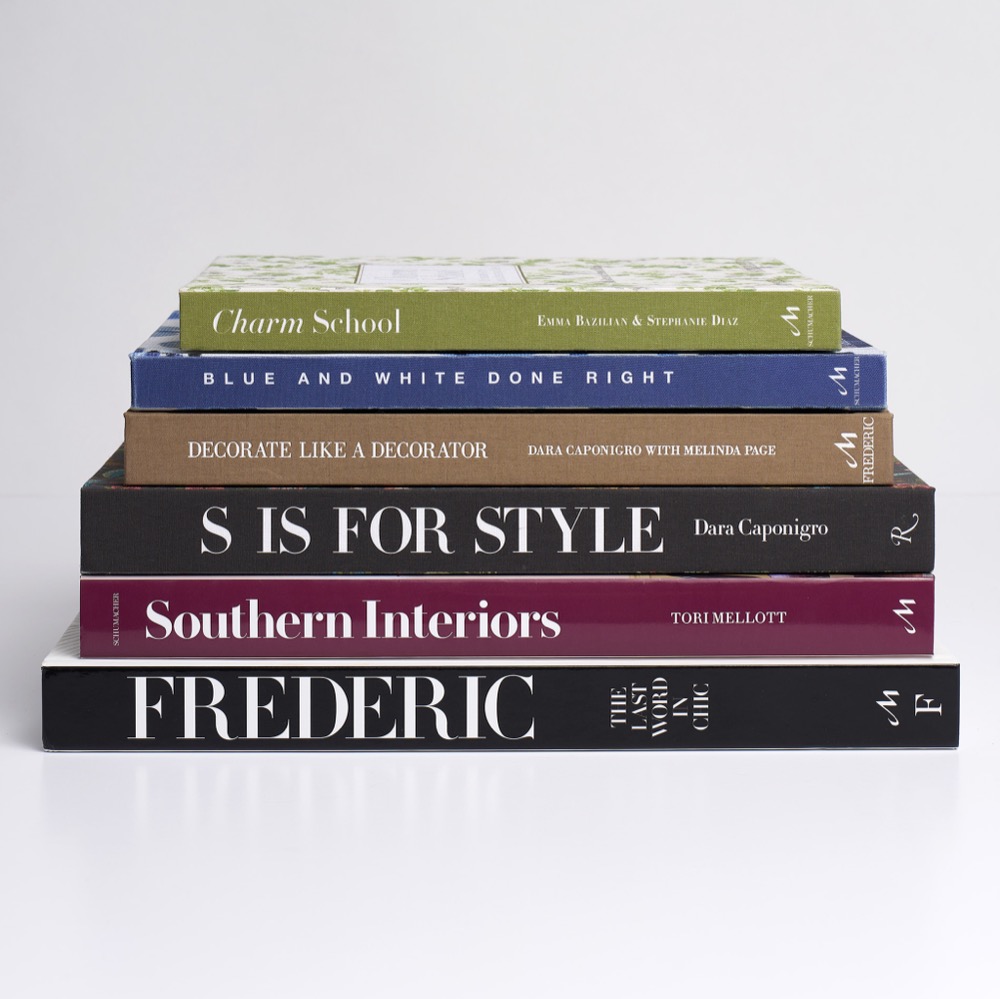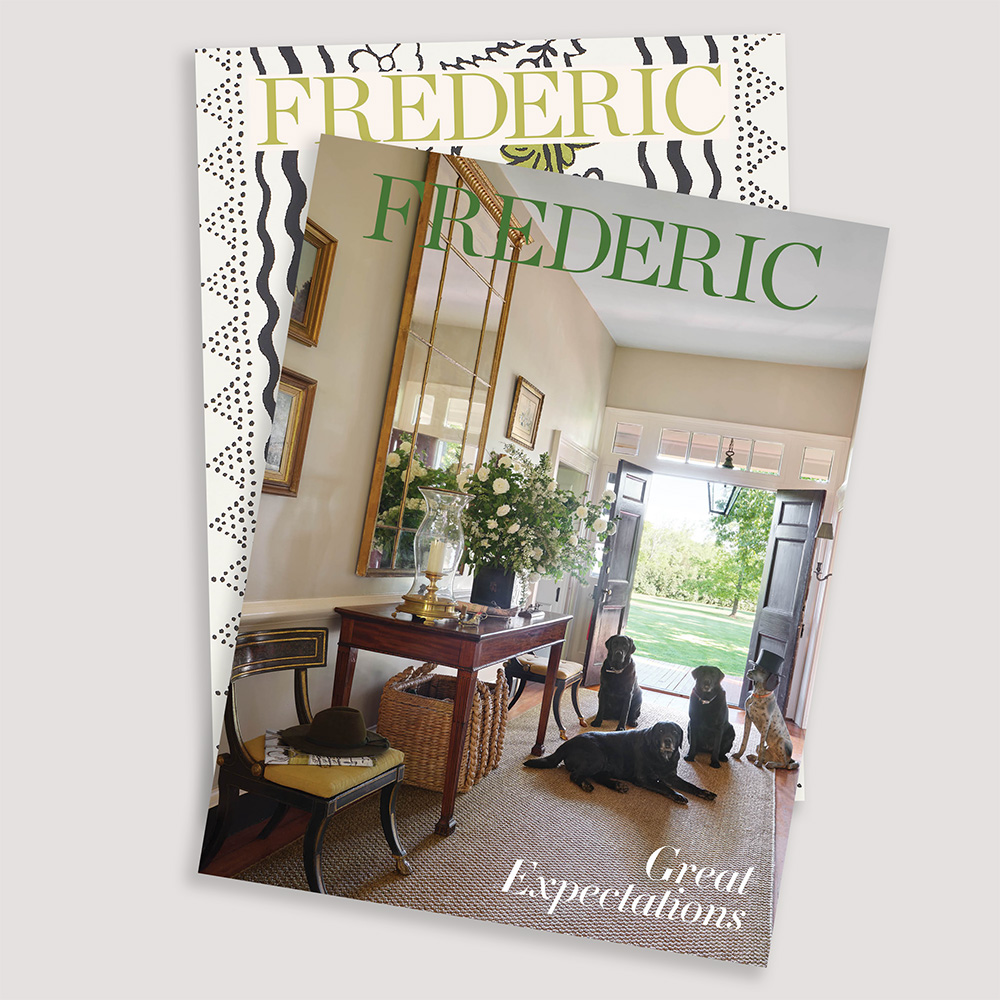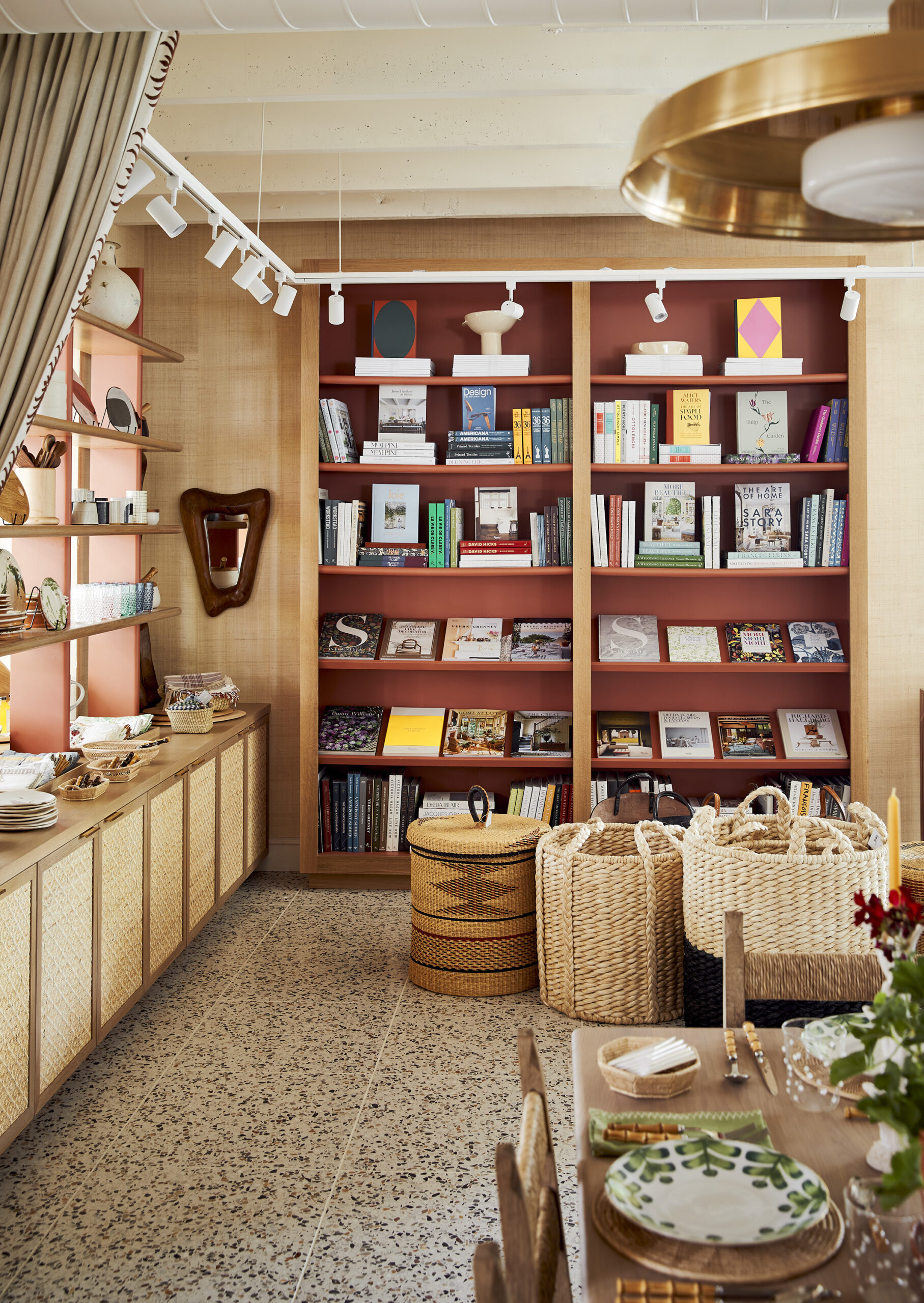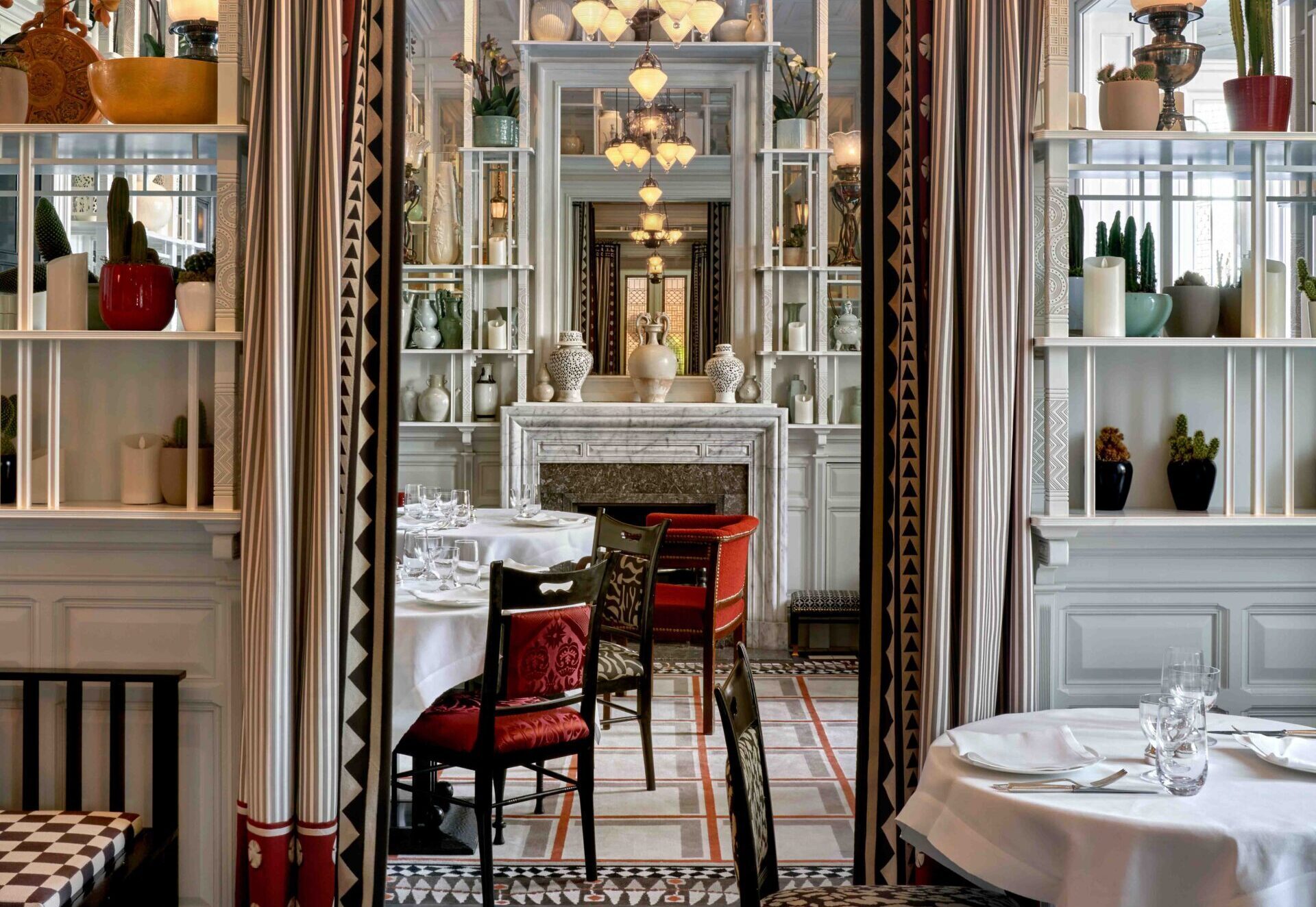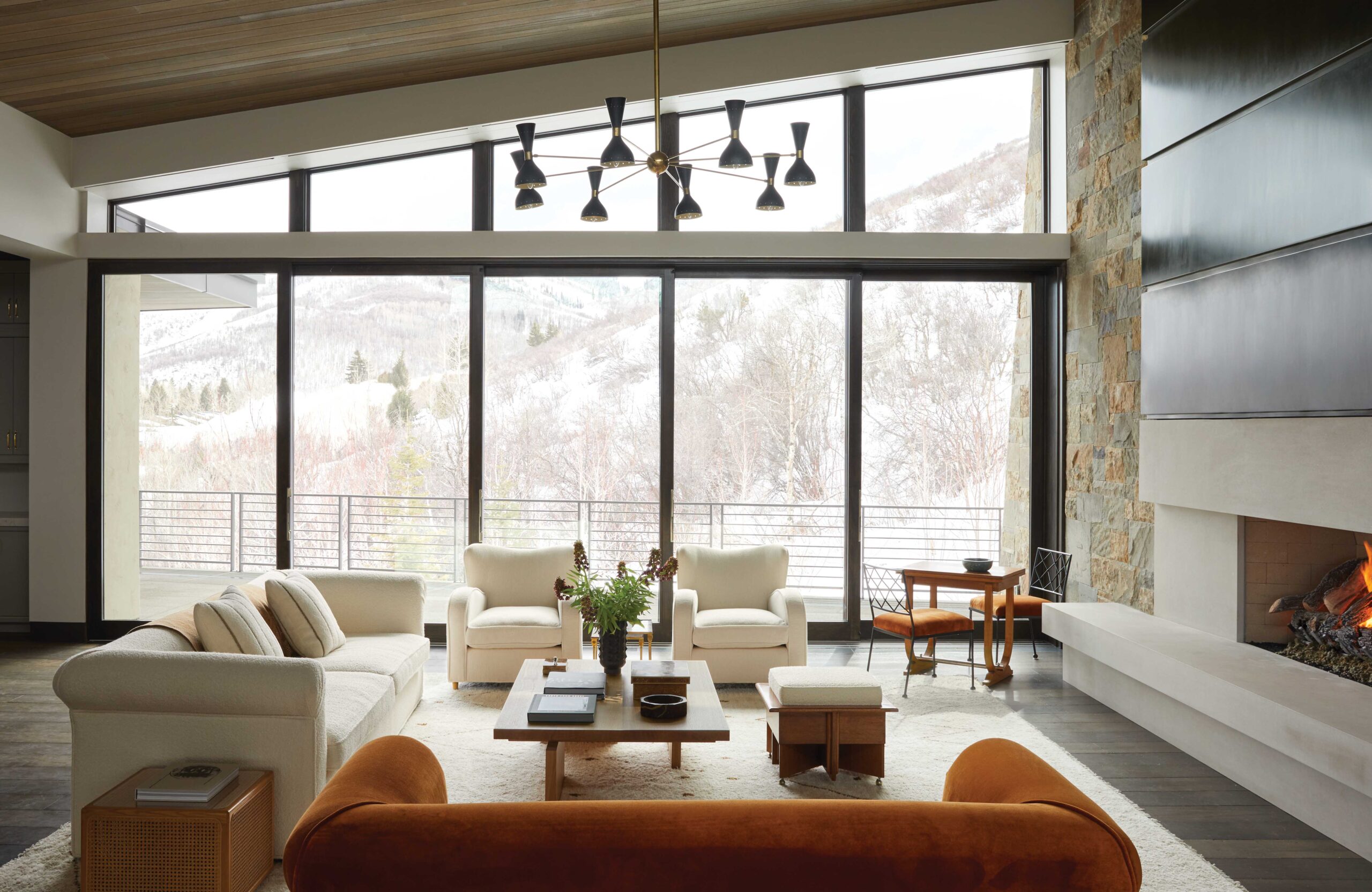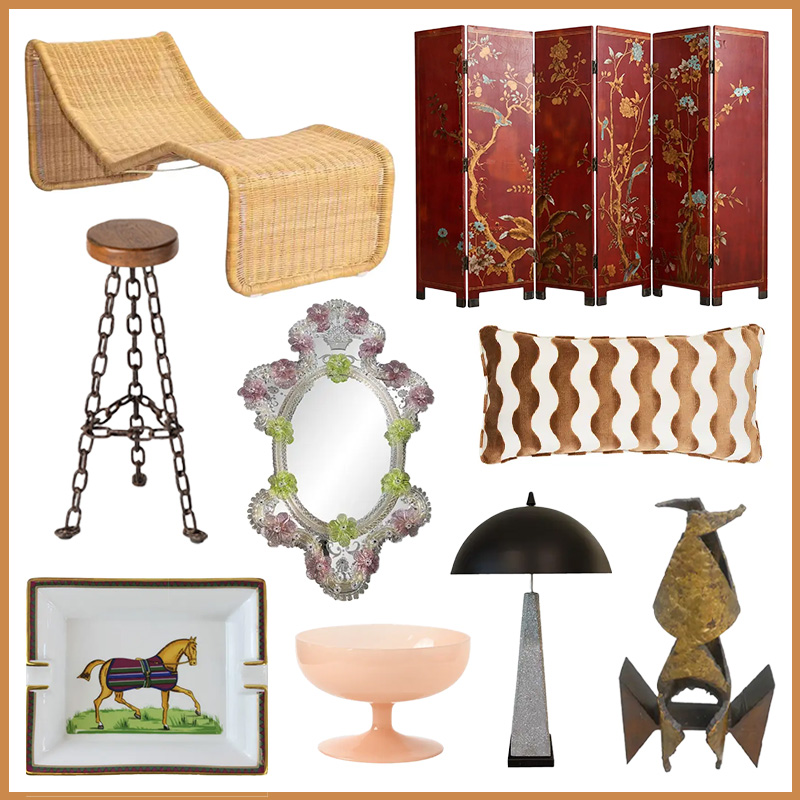Strolling past One Sloane Gardens, a five-story red brick Victorian steps from Chelsea’s posh Sloane Square, you’d be forgiven for not realizing you’ve just walked by London’s buzziest new hotel. It wouldn’t be the first time: “When we opened, the first guests who entered asked if it was a private house,” recalls François-Joseph Graf, the lauded French designer behind its revitalized interiors. “They thought they had come to the wrong place!” In a sense, that’s just the way the team behind the 30-room gem intended: There’s no sign on the outside façade; the only hint you’ve reached the right spot is the numeral 1 above the arched door. “It doesn’t feel like a hotel,” adds Graf, “but like you’re being hosted in someone’s house.”
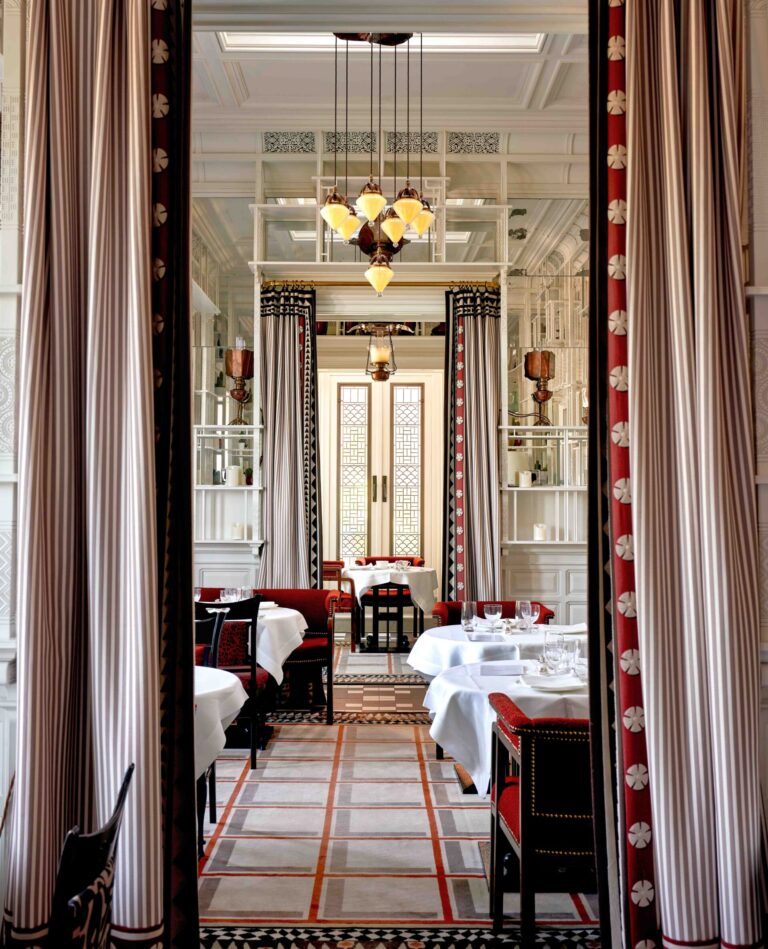
The intimate top-floor restaurant deftly projects Wiener Werkstätte, Neo-Grec, and Arts and Crafts motifs through the lens of Victorian England. The custom rug is based on a design by Austrian artist Koloman Moser.
Simon Brown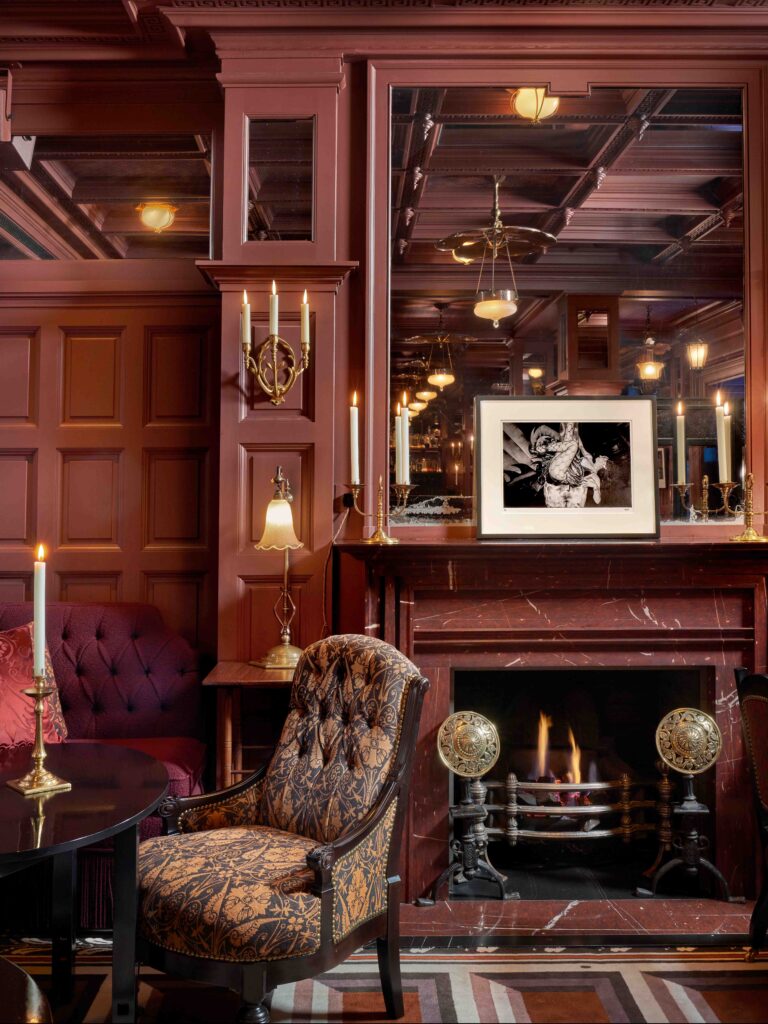
A roaring fire and red-drenched millwork create a moody backdrop in the bar. The hotel's light fixtures are a mix of original W.A.S. Benson pieces and reproductions.
Simon Brown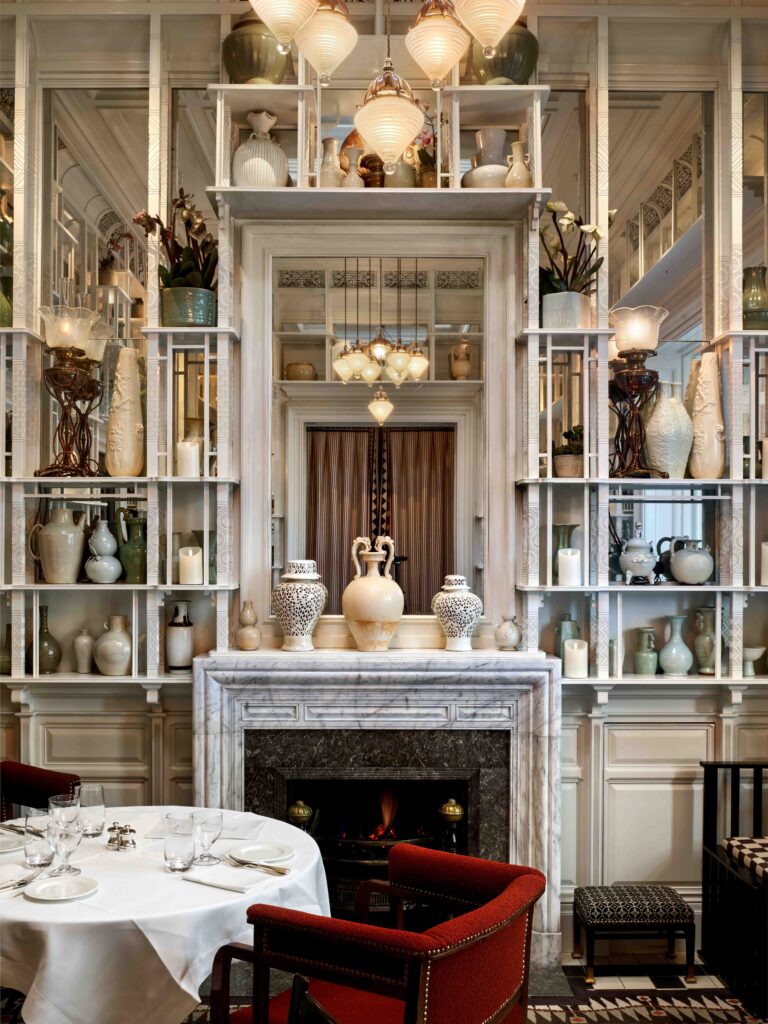
Inspired by James McNeill Whistler and Thomas Jeckyll’s famous Peacock Room, Graf filled Japanese-style carved shelves with ceramic vases he collected in Singapore.
Simon BrownOnce inside, you might also conclude that said house—originally built in 1888 by Edwin Thomas Hall, the architect behind the Liberty department store—had been painstakingly preserved over the past 130-or-so years, its original coffered ceilings and wainscoting, stained-glass windows, and marble mantels all restored to perfection. Wrong again. In reality, the building had been broken up into apartments and completely stripped of its Victorian charm by the time its current owner, Cadogan Estates, enlisted Graf and famed hotelier Jean-Louis Costes to transform it into a luxury hotel. “We tore everything out and rebuilt it from zero,” says Graf, who worked with a team of craftspeople to reintroduce authentic period details from boiserie panels to plaster cornices. “Everything from the proportions to the colors to the lights was carefully considered. The challenge was to create the idea that it was a real Victorian house that had always existed.”
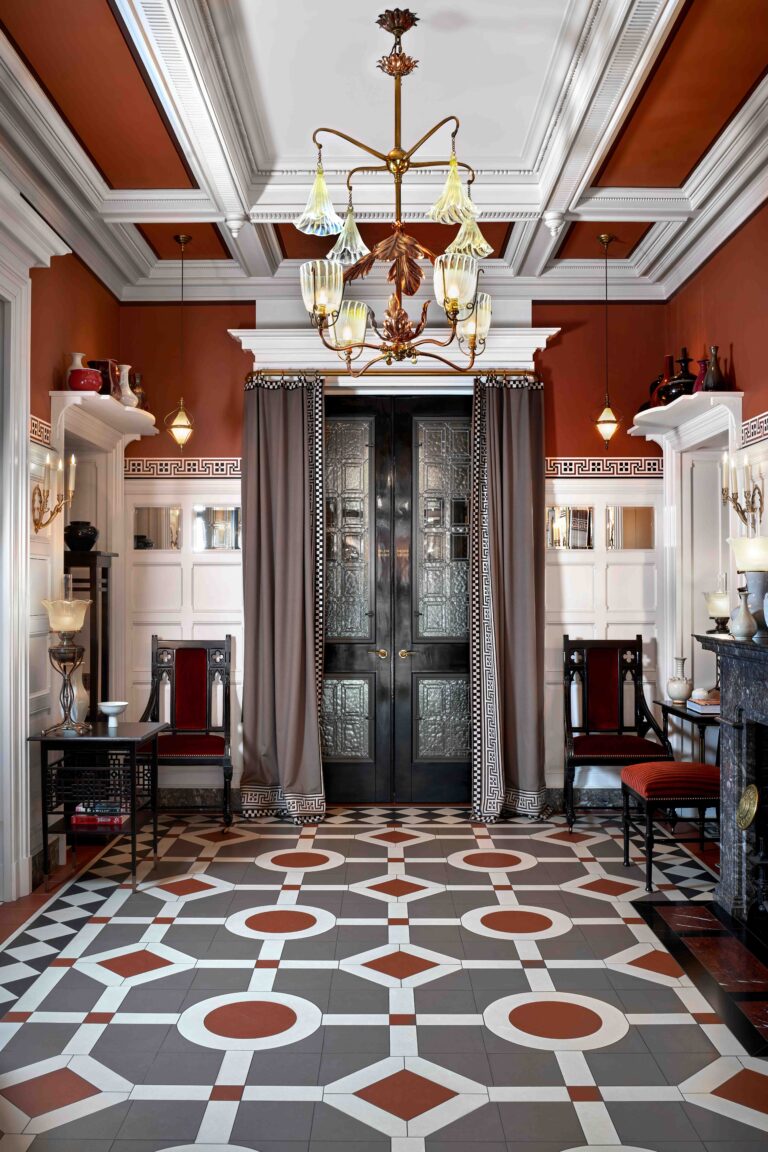
In the lobby, carved ebony armchairs in the style of John Pollard Seddon add Neo-Gothic flavor to graphic tilework and leaded-glass doors.
Simon Brown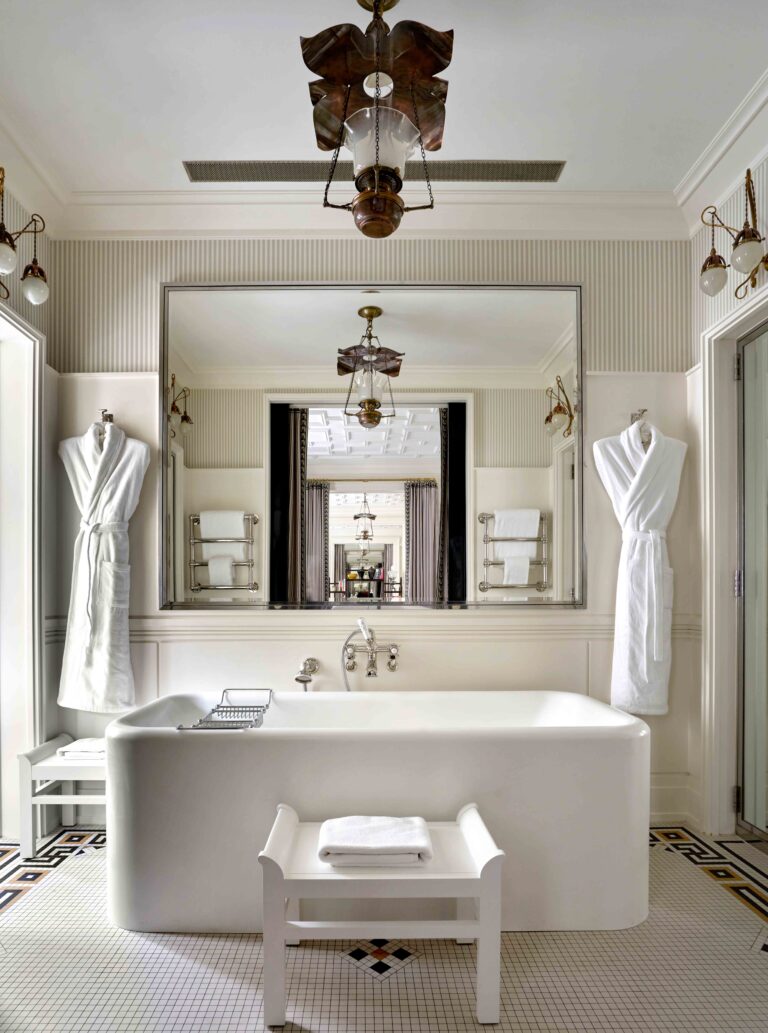
Sandstone mosaic tile floors repeat the neoclassical motifs.
Simon Brown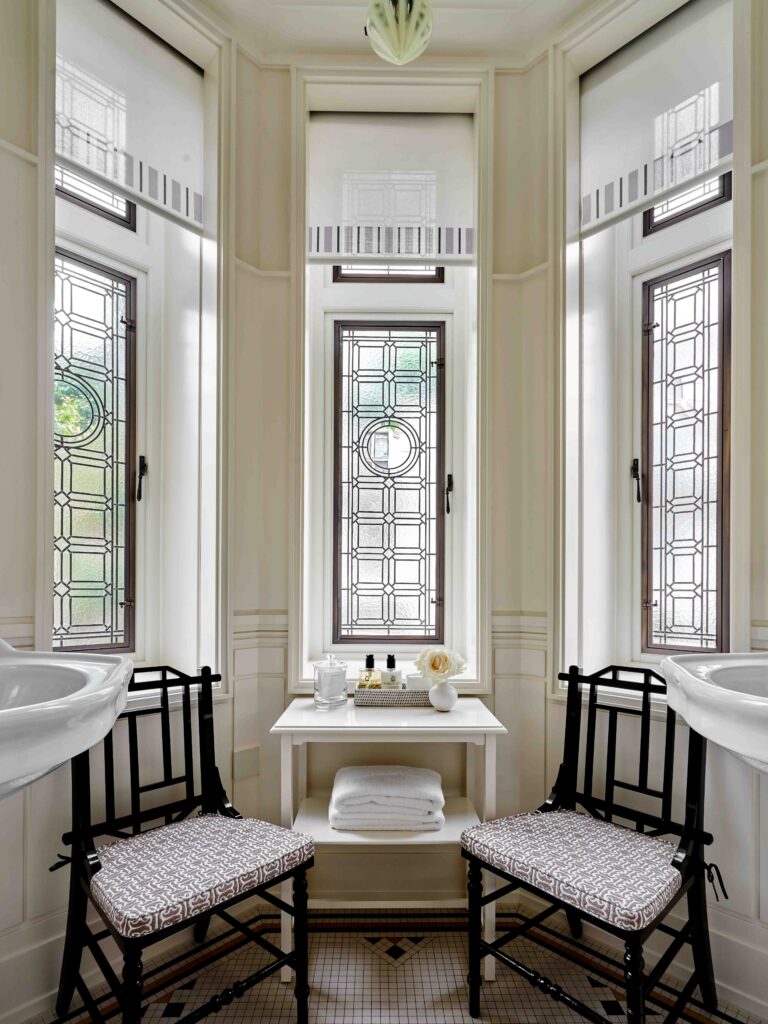
Ateliers Loire in Chartres, France, created the stained- and leaded-glass windows.
Simon BrownGraf’s vision of Victorian London, it should be noted, feels worlds away from the heavy, hackneyed decoration so often associated with the era. Instead, the dramatic palette of blacks and browns and reds is buoyed with swaths of creamy white in the manner of Charles Rennie Mackintosh, the William Morris wallpaper is recolored in subdued tones, and the W.A.S. Benson light fixtures deployed to showcase their sculptural appeal. James McNeill Whistler and Thomas Jeckyll’s Peacock Room is reimagined within the hotel’s restaurant, its Japanese carved shelves replicated in white (Graf and his team even visited the original in Washington, D.C., to take measurements) and laden with shapely vessels, each hand-selected by Graf in Singapore. And while pattern abounds, there is nary an English rose in sight; the bespoke rugs are boldly graphic, echoing the geometries of Koloman Moser, while the luxuriously embroidered curtains are trimmed with Neo-Grec motifs à la Villa Kérylos.
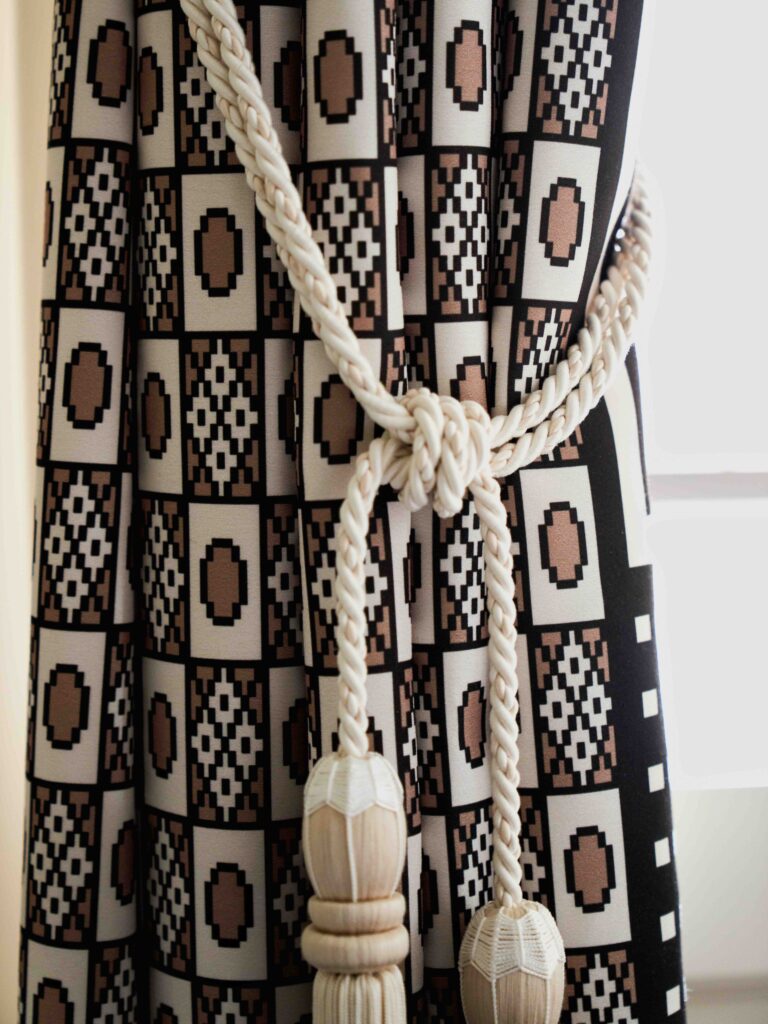
The curtains, by Phelippeau Tapissier in Paris, are in a custom Pierre Frey printed fabric.
Simon Brown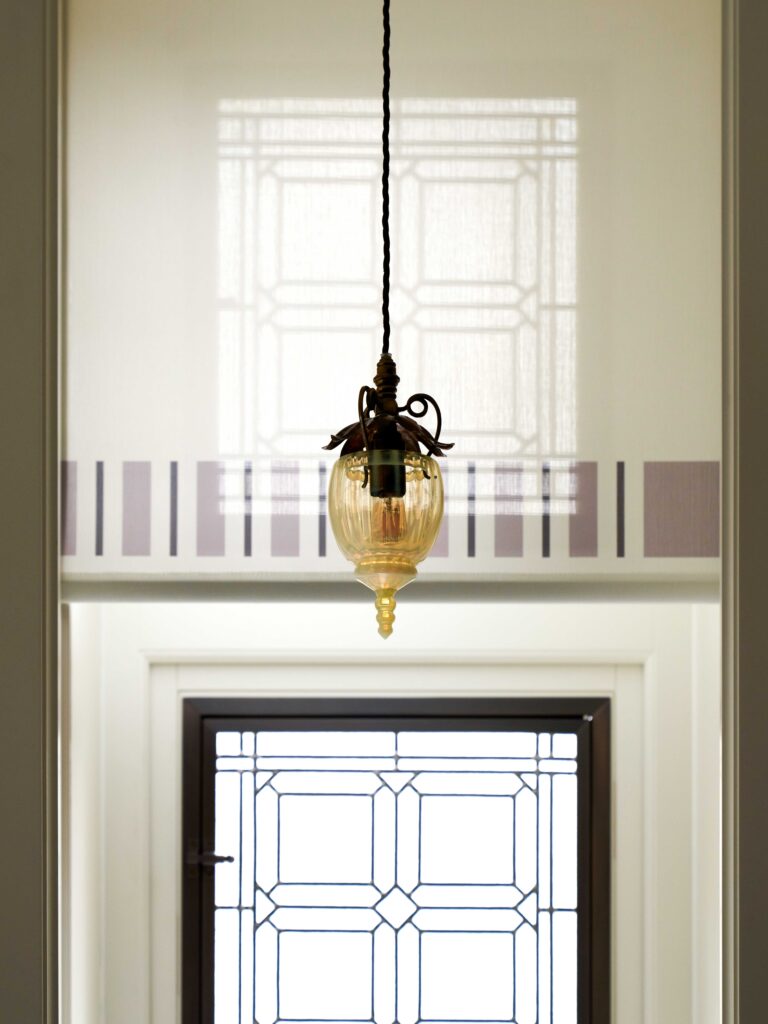
The hotel’s pitch-perfect W.A.S. Benson light fixtures were reproduced from originals procured by antiques dealer Oscar Graf.
Simon BrownThe result, much like the work of the artists who inspired it, is that At Sloane feels at once deeply storied and decidedly modern. “Rooms were so dark in the Victorian period. Then Mackintosh went to Vienna to follow the Wiener Werkstätte, and all of a sudden, everything became white,” says Graf. “It was so new, so simple. It still feels extraordinary today.” Most of all, though, it feels like London. “Even with the curtains shut,” adds Graf, “you know where you are. And, to me, that is the future of hotels. People want to go back to something special.”
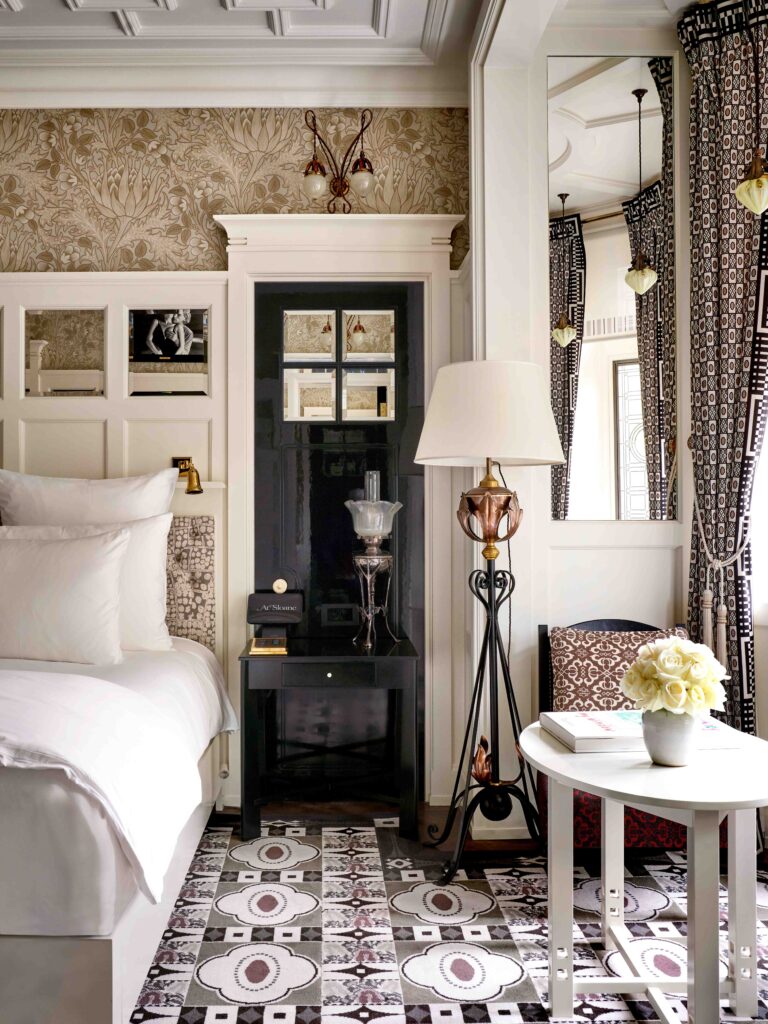
A strict color scheme unifies a guest room’s myriad patterns and prints (including William Morris’s Artichoke wallpaper), while white millwork and a Charles Rennie Mackintosh–style table create moments of calm.
Simon BrownTHIS ARTICLE ORIGINALLY APPEARED IN VOLUME 14 OF FREDERIC MAGAZINE. CLICK HERE TO SUBSCRIBE!
